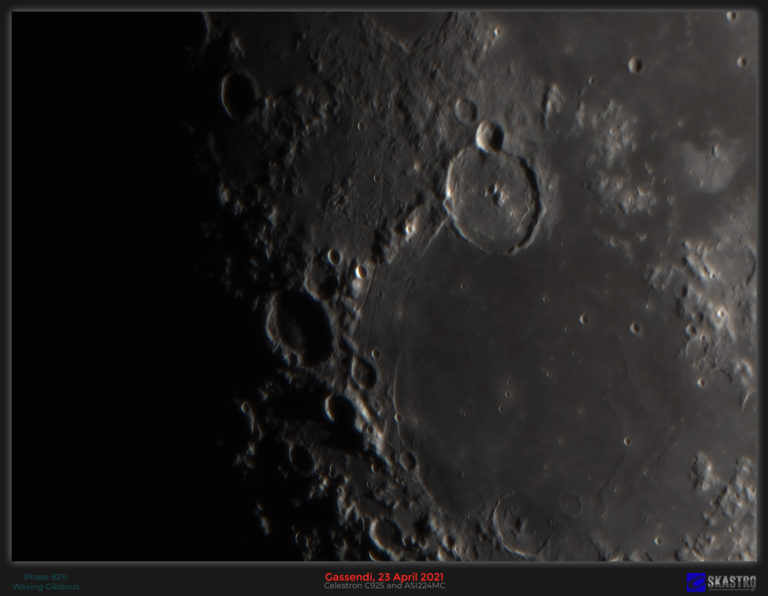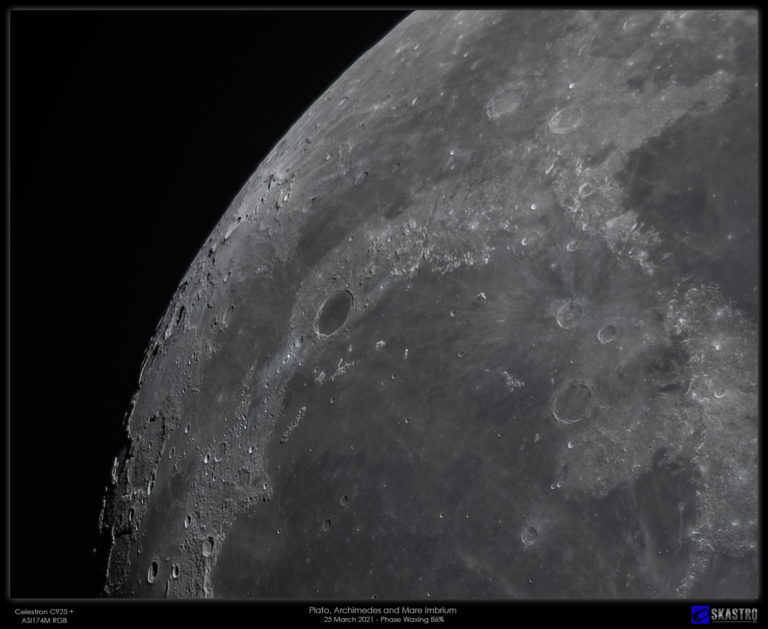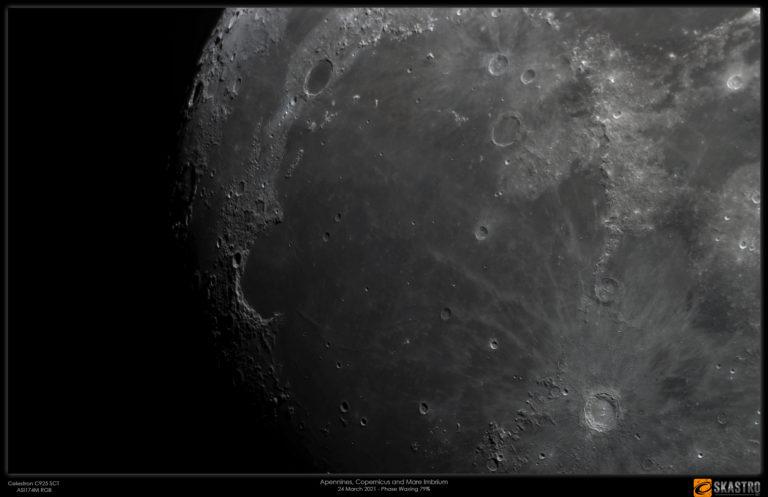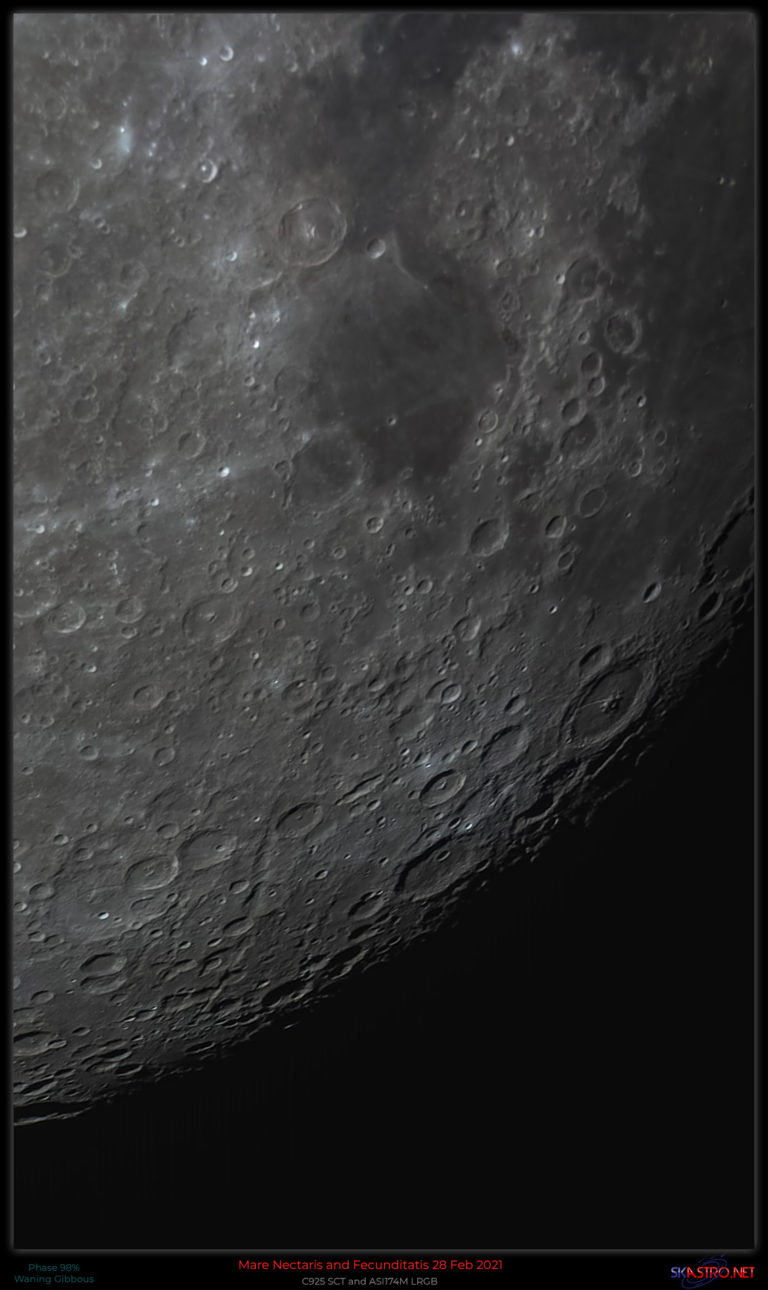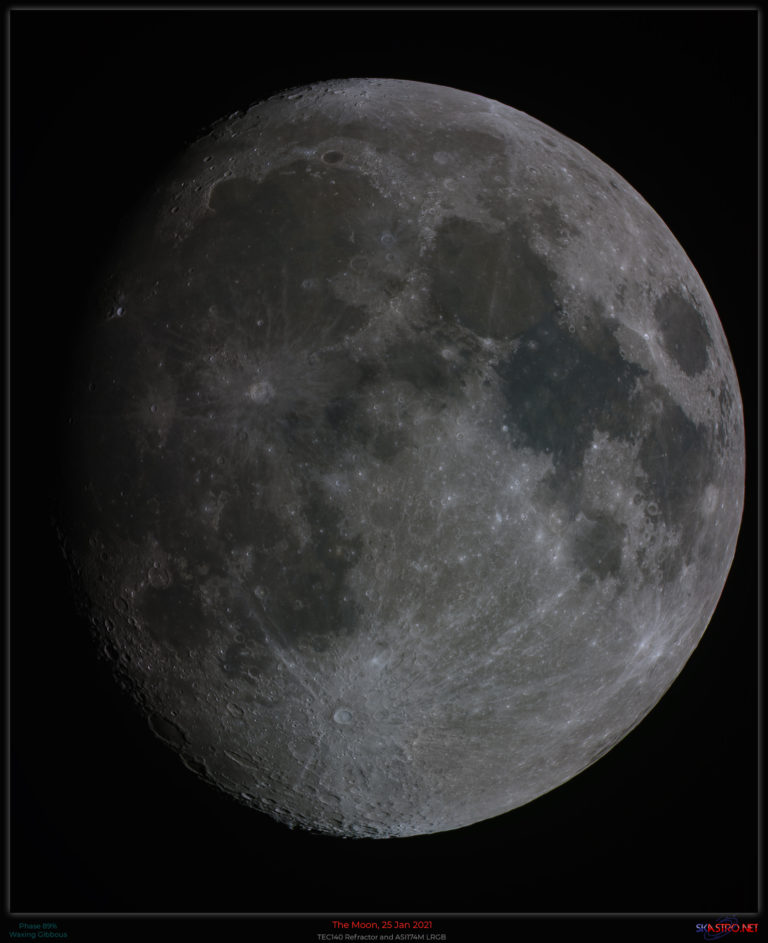A selection of images I took with my C925 and ASI224MC. Transparency was reasonably good but seeing was quite poor and the image was wobbly. Each image is developed from a 5000 frame .ser file choosing the best 15% of frames as a result of the poor seeing. The Moon is at a phase of 82% waxing gibbous and some nice shadows on the terminator. From my back yard observatory in Nottingham, UK. Using Celestron C925 SCT telescope and ASI224MC colour high speed planetary camera.Telescope is at its native focal length of F10 for all these images since the seeing was much too unstable to use a Powermate or Barlow, even a x2 one woudl have been too much on this session.
Images on this post were made by using the TEC140 and Celestron C925 SCT telescopes with my ASI174M mono camera. From my backyard in Nottingham on the evening of 25th March 2021 with the Moon high to the south in Leo at a phase of 86% waxing (i.e. growing towards full moon) and at an altitude of about 50 degrees above the horizon. A slightly hazy sky made for quite good seeing although it was very cold and windy and the moon was jiggling about a lot in the gusts, even inside my sheltered observatory. I had to try and time my capture runs between these gusts and passing clouds, a process that was not always successful. As a consequence I accumulated nearly 600G data for these four pictures in total, much of which had to be deleted. I was outside at the scope for about 90 minutes doing these…
A selection of four images I took with my two main telescopes on the evening of the 24th March 2021 with The Moon at 78% waxing gibbous phase to the South in the constellation of Leo.First up below is a main disk taken with TEC140 refractor. I shot RGB through those filters on my ASI174M camera and I took the luminance through a 7nm Ha filter. My field of view with the TEC140 and this camera is only half the disk and so I have to take sequence runs, one for the north and the other for the south and then combine them in Photoshop. Lunar Disk I then moved on to use my C925 SCT telescope again using the ASI174M in RGB mode. I did not capture a specific luminance channel this time and just used RGB and made a pseudo-luminance. The weather conditions were too windy to get…
I have owned my Celestron C925 SCT telescope for many years but have only ever used it for visual purposes. I have always preferred the use of refractors for imaging. However, I have started to want to get much greater detail in my lunar images, having been bitten by the lunar imaging bug. I had some significant issues getting the C925 properly collimated, accurate enough for imaging purposes, a story I discuss here. After successfully collimating the scope these are my first two pictures taken with The Moon quite low down in the East with some slight mistiness. Mare Nectaris Region Above is the best 15% of 5000 frames in each of Red, Green and Blue. I collected the data with Sharpcap with ASI174M camera with Baader RGB filters. I created the master R,G,B files with PlanetarySystem Stacker and then used PixInsight and Photoshop to develop. Copernicus Above is Copernicus…
The Moon on 25th January 2021 at 89% in Gemini. It was freezing cold, snow on the ground with reasonable skies and seeing conditions. The full disk below is the best 20% in each of the R,G and B filters out of 10000 frames. I used Planetary System Stacker software to process the raw .SER files from the camera and then used PixInsight and Photoshop for processing. I used my TEC140 refractor and ASI174M high speed camera with Baader RGB filters. I no longer capture a separate luminance channel and instead make a synthetic luminance from the RGB data and then sharpen that and use as a luminance layer in Photoshop. RGB Moon at 81%, 25 January 2021 For the two images below I used my Televue 2″ Powermate X2 in order to double the TEC140 telescope’s focal length to 1960mm. The processing and frame set is the same as…

